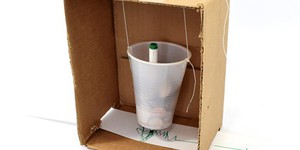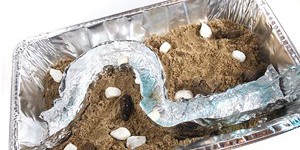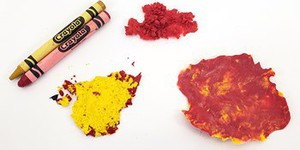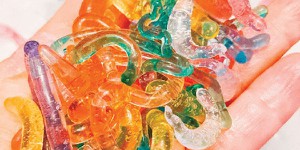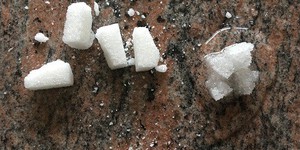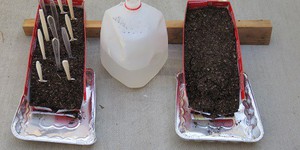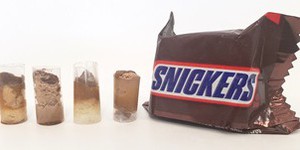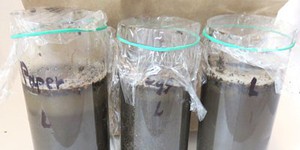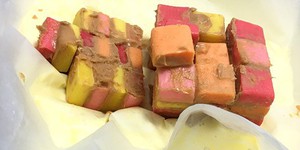Geology STEM Activities for Kids (15 results)
Geologists study the Earth, trying to understand the forces that gradually shape and change the landscape and ocean floor, as well as forces that make themselves felt more suddenly, like earthquakes and volcanoes. The information geologist discover helps in many ways, from keeping populations safe from disasters like landslides to uncovering important ore deposits like titanium used for surgical equipment.
|
Select a resource
Sort by
|
STEM Activity
180 reviews
Scientists study earthquakes so we can understand them better and hopefully one day predict them so we can save thousands of lives. A seismograph is a tool scientists use to record earthquakes and measure their strength. In this activity you will build your own seismograph using simple materials.
Read more
STEM Activity
44 reviews
Earth is a very watery place! More than 70% of the Earth's surface is covered by water. This is due to the many water bodies that can be found everywhere on our planet. What types of water bodies do you know? They are all very distinct from one another in their appearance, size, shape, and movement. In this activity, you will explore the distinct characteristics of a river by creating a river model inside a pan with sand, pebbles, and real water! After that, you can continue to model other…
Read more
STEM Activity
51 reviews
Use crayons to model the rock cycle in this fun activity! You will make colorful sedimentary, metamorphic, and igneous "rocks" from crayon shavings.
Read more
Featured
STEM Activity
60 reviews
Did you know that the seaweed you've seen in the ocean or even eaten as a snack is inspiring innovators to imagine new materials? Large
brown algae, like kelp, contains polymers—long chains of molecules—that are more environmentally friendly than the ones in most plastics. These natural polymers (alginates) could eventually be used to create sustainable everyday objects. Try your hand at using a bit of chemistry to turn biodegradable polymers from algae into your own custom…
Read more
STEM Activity
21 reviews
Weathering, or the wearing away of rock by exposure to the elements, not only creates perfectly smooth boulders, sinkholes to swim in, and caves to explore; it also eats away statues and buildings. Try it out on a sugar cube and feel how destructive weathering can be.
Read more
STEM Activity
9 reviews
You pick up litter, you reduce, reuse and recycle but did you ever consider conserving the soil? It might seem farfetched, but it turns out that soil erosion—or the wearing away of soil by water, wind and other natural forces—is a problem. Productive farmlands can disappear as nutrient-rich topsoil in fields washes away when heavy rains hit them. Waterways can get polluted as pesticides and fertilizers wash into them. Even human life and property are jeopardized, as soil erosion…
Read more
STEM Activity
18 reviews
Did you know that more than half of the bottled water sold in America is labeled as “spring water,” but only a fraction of this water naturally flowed from a spring? The FDA allows the sale of groundwater that is sucked up by hydraulic pumps that are installed close to a spring as “spring water.” In the year 2014, this was about six billion gallons of water, a number that increases each year. That is a lot of water! You might wonder how water is stored under the ground,…
Read more
STEM Activity
19 reviews
Act like a geologist in this fun activity as you drill "core samples" from candy bars using a straw. Can you identify the type of candy bar just from a sample? Try this activity to find out!
Read more
STEM Activity
2 reviews
Our planet recycles and reuses everything on it that is needed to support life. It is an amazing, giant recycling system called the biogeochemical cycle. You can actually model this on a small scale by using a plastic bottle and mud to build what is called a Winogradsky column. In this activity, you will build your own Winogradsky columns and investigate how including different nutrients can affect which soil microorganisms flourish and which fail.
Read more
STEM Activity
6 reviews
Have you ever thought about what type of ground buildings are constructed on? Rock, gravel, sand, soil and many others—there are lots of different types of "ground." And this issue becomes especially important in areas that are likely to get earthquakes. In this activity you will build a sweet building on a homemade shake table and find out how an earthquake impacts buildings constructed on landfill. How will your structure perform in a pretend earthquake?
Read more
STEM Activity
Have you ever let a map spur your imagination, wondering how life was as a world explorer sailing the oceans in search of new land? Maybe you see yourself drawing a map of your new discoveries. Wait a minute – you just realize Earth is round, so how do you create an accurate flat map? Throughout history, cartographers all around the world have found different methods for creating flat maps of Earth. None can represent reality exactly, but each is useful for specific purposes. Do this…
Read more
|
Explore Our Science Videos
Write Secret Messages With Invisible Ink!
Make a Model to Explore the Distance from the Planets to the Sun
DIY Mini Drone Part 7: Automatic Balancing


